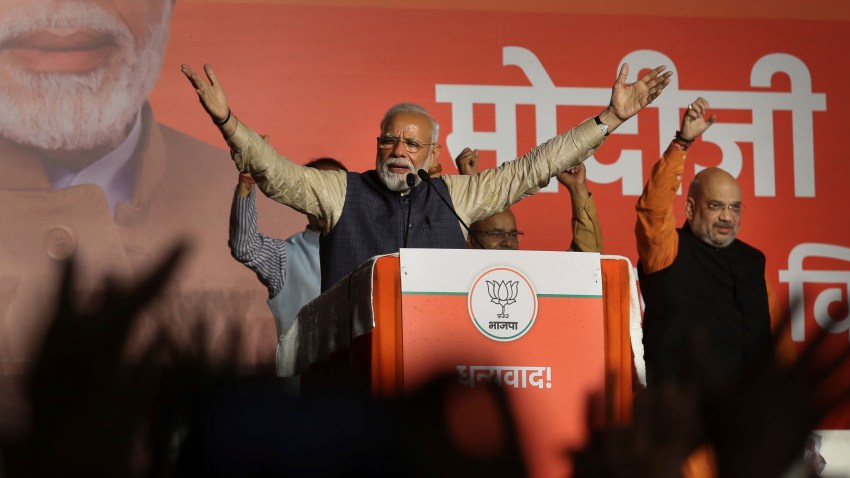Prime Minister Narendra Modi’s underperformance in India’s general elections in June 2024 put a dent in his aura of invincibility. Though Modi’s right-wing, Hindu nationalist Bharatiya Janata Party still finished first, it failed to win an absolute majority, forcing him to form a coalition government for the first time since rising to power in 2014. The surprisingly strong performance by India’s opposition coalition, led by the Congress Party, suggests that the appeal of Modi’s Hindu nationalist agenda could be fading, with concerns over his mixed economic record a greater priority for voters, even in regions and among constituencies that had previously supported him.
Whether that, and the preferences of his coalition partners, forces Modi to rein in his Hindu nationalist agenda and illiberal tendencies remains to be seen. During the campaign, Modi and members of his party routinely resorted to rhetoric targeting India’s Muslim minority. And his time in office has seen a range of democratic backsliding in India, with regard to minority rights, but also media freedoms, particularly for journalists covering religious violence.
Meanwhile, on foreign policy, Modi has actively and effectively raised India’s diplomatic profile in the international arena. He has cultivated deeper ties with the U.S., France and Europe more broadly, but also with China and even Russia, highlighting New Delhi’s insistence on maintaining its strategic autonomy. And his efforts to position India as a leader of the Global South culminated in its G20 presidency in 2023, which was widely seen as a success.
Nevertheless, Modi’s diplomatic triumphs have not resolved some of the enduring foreign policy challenges facing India. Perhaps most visible among them is its longstanding “hot peace” with Pakistan, which threatened to boil over into open conflict on several occasions in recent years. But there is also India’s competition for regional and global influence with China, which makes their relationship a complicated mix of cooperation and mutual suspicion. Four years ago, the two countries even engaged in a series of unarmed skirmishes along their disputed border in the Himalayas that culminated in a deadly brawl in June 2020, marking the first casualties suffered there in 45 years. Though they subsequently reached a resolution to the standoff, the situation remains volatile, in part because of the pressure Modi faces from his nationalist domestic base to stand up to India’s powerful neighbor.
The threat posed by China explains India’s efforts to deepen ties with Washington—and vice versa. Upon taking office in January 2021, U.S. President Joe Biden made a priority of engaging early with New Delhi as part of the Quadrilateral Security Dialogue, known as the Quad, which observers see as an effort to counter China’s influence. After that initial burst of momentum, however, efforts to develop the Quad into a harder-edged platform have flagged, and India’s refusal to vocally condemn the Russian invasion of Ukraine or rally behind the U.S. position on the war at the United Nations subsequently introduced some bilateral tensions. But as Modi’s triumphant state visit last year to Washington and the big-ticket arms deals announced during it underscored, geopolitical considerations seem to have trumped the occasional divergence in interests—and Biden’s emphasis on democratic values—in determining Washington’s priorities for the relationship.
WPR has covered India in detail and continues to examine key questions about what will happen next. Will Modi’s government continue to look the other way on Hindu nationalist violence? Will ties with the U.S. live up to the heightened expectations generated by Modi’s state visit? Can Modi capitalize on the country’s “demographic dividend” to turn India into an economic superpower? Below are some of the highlights of WPR’s coverage.
Our Most Recent Coverage
India’s Women Have Fallen Further Behind Under Modi
Indian Prime Minister Narendra Modi talks a lot about women’s empowerment. His record in office is far from encouraging.
Editor’s note: This article was originally published in July 2019 and is regularly updated.

